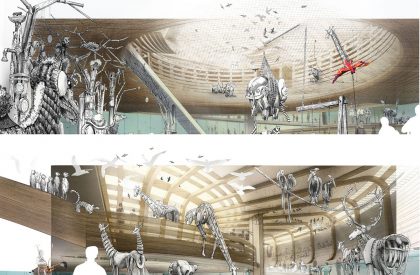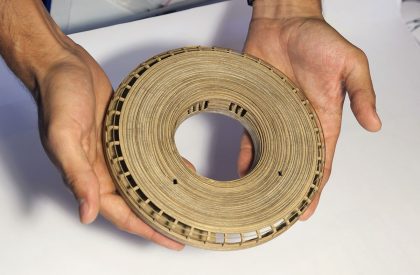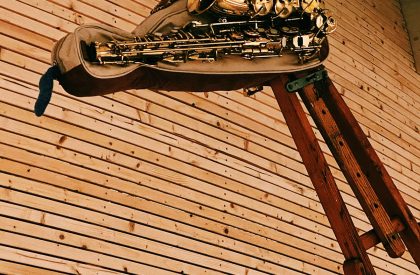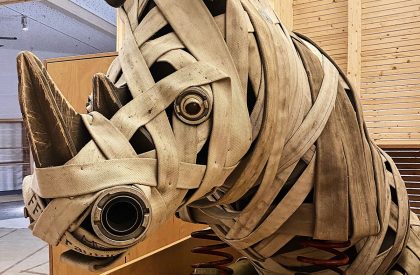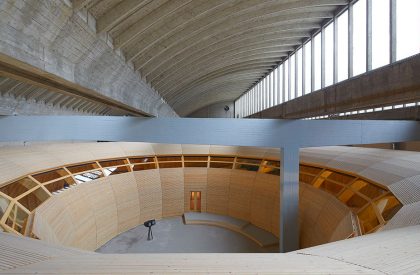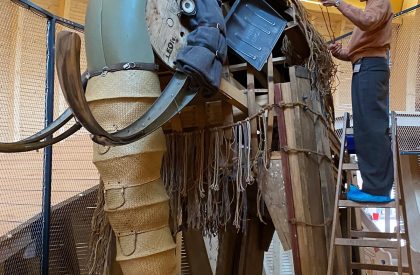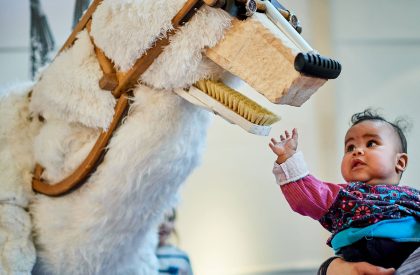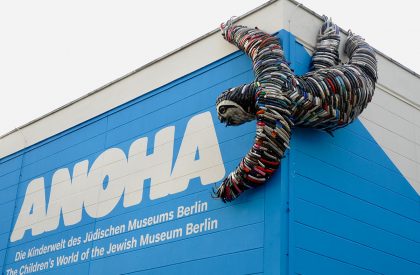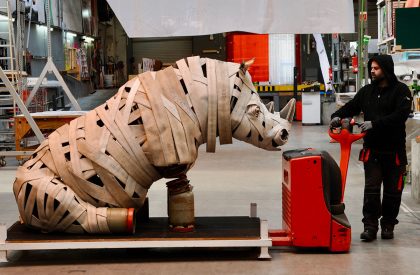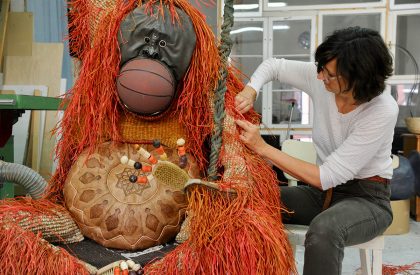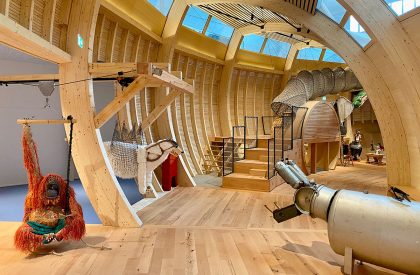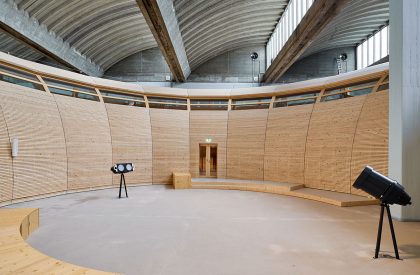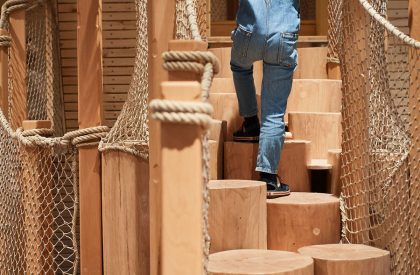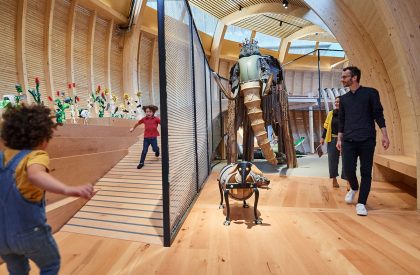Excerpt: ANOHA—The Children’s World of the Jewish Museum Berlin by Olson Kundig is an architecture project featuring a circular wooden ark that complements and contrasts with its surroundings. The warm, curvilinear ark offers a softening counterpoint to the rectilinear Brutalist structure of the existing hall, while the structural ribs within the ark echo the concrete ribbing that frames the skylights overhead.
Project Description
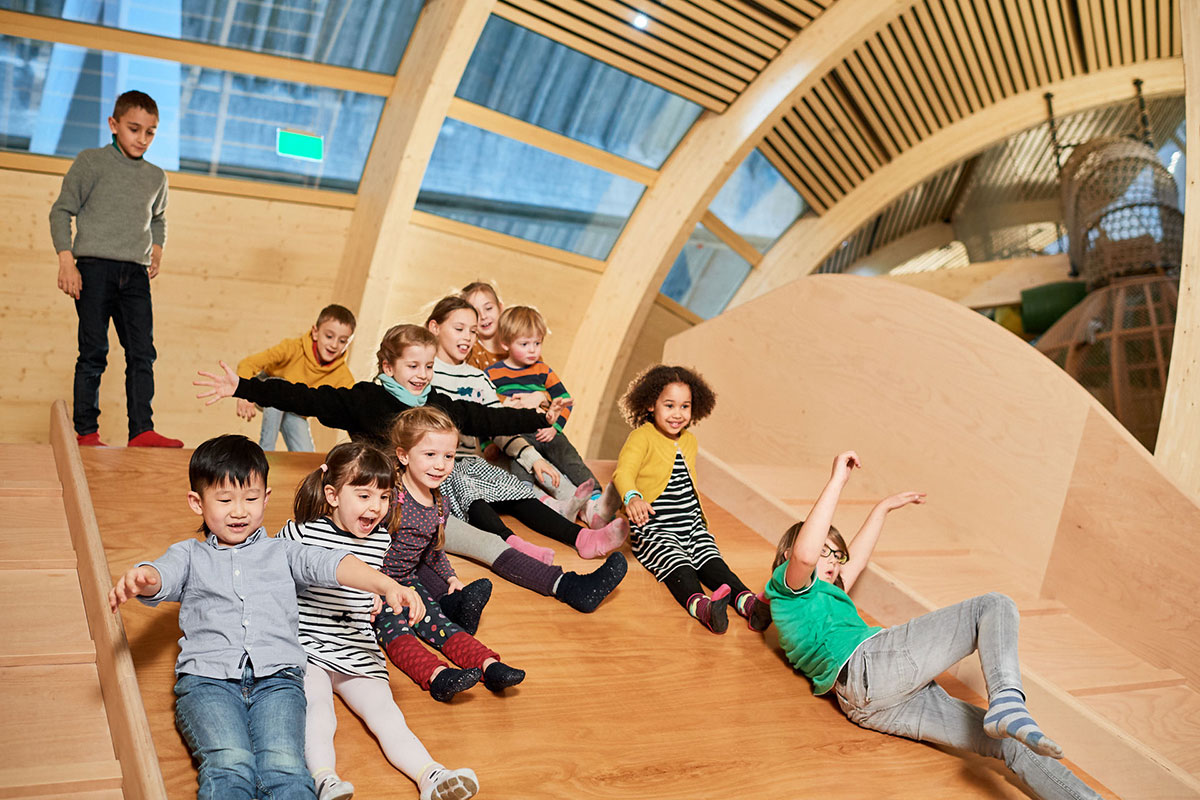
[Text as submitted by architect] Inspired by the pioneering vision of Noah’s Ark at the Skirball Cultural Center in Los Angeles, which underscores the importance of diversity, community, and second chances, ANOHA—The Children’s World of the Jewish Museum Berlin seeks to give the museum’s youngest guests a sense of hope and possibility through a world of imagination and play. ANOHA is an explicitly equitable space where all children can feel welcomed and engaged. An emphasis on tactile learning through play supports equal access throughout the museum, inviting people of all ages, backgrounds, ethnicities and physical abilities to participate.

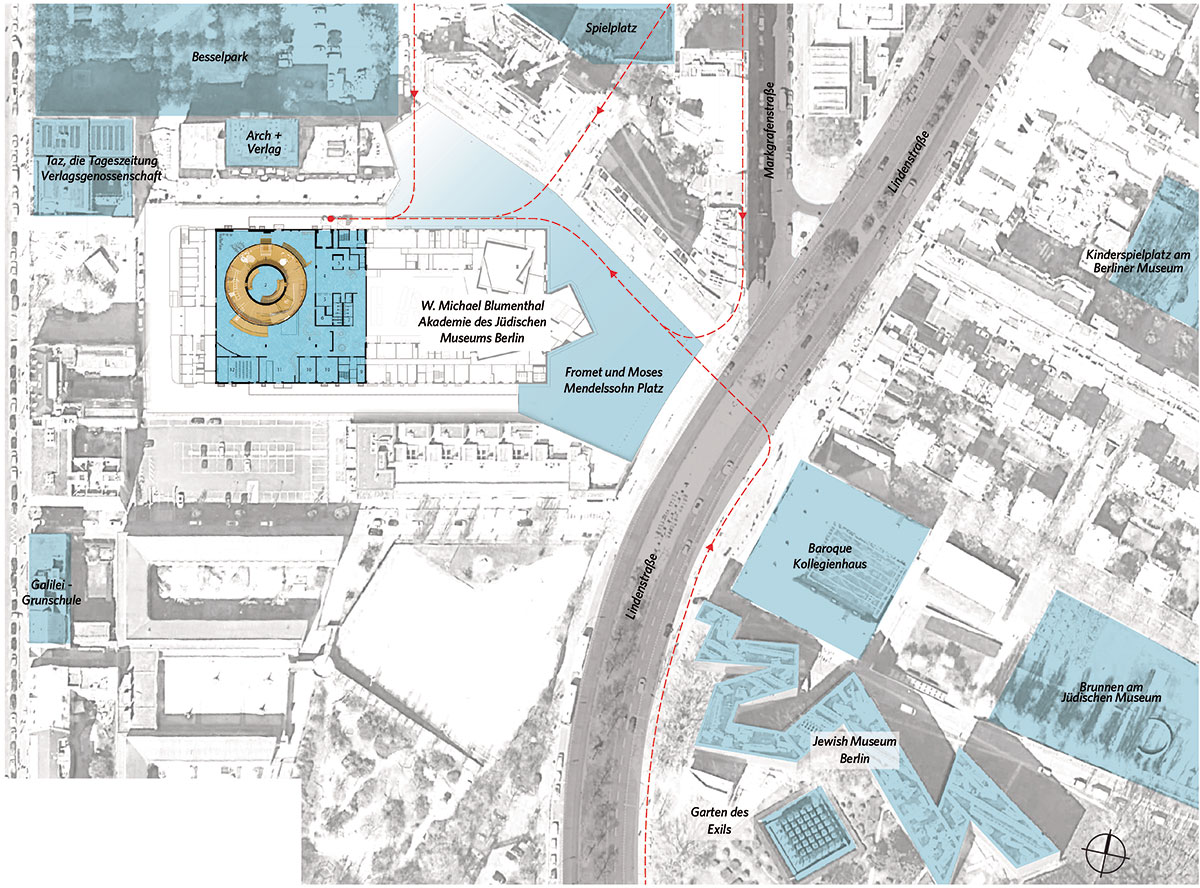
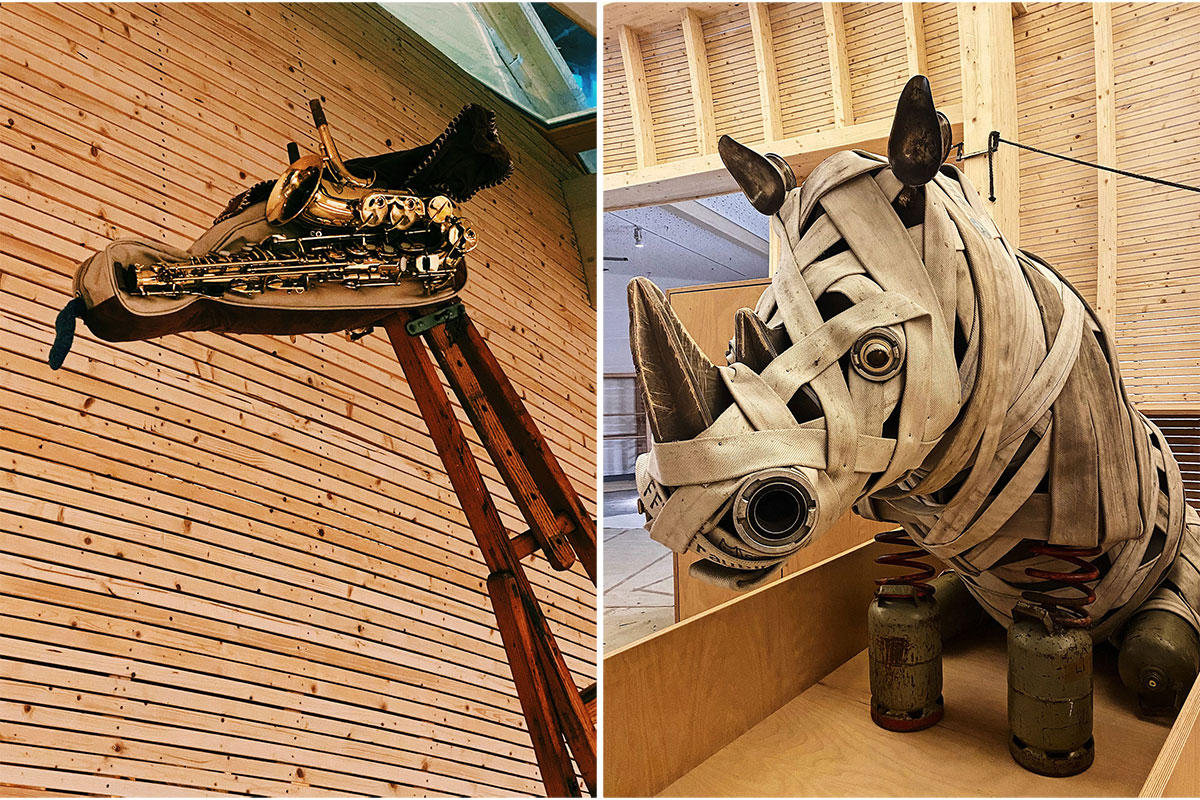
Interactive exhibits placed along an intuitive visitor pathway teach children how to solve problems independently and as a group, while explorative spaces modeled after unique habitats allow children to experience the diverse perspectives of the various animals. Within ANOHA’s world of imaginative roleplay, children may pretend to feed and groom the animal sculptures, then clean up after them and compost their waste to feed the soil, introducing a sense of stewardship in the natural world as outlined by the Jewish tradition of tikkun olam.



At the heart of ANOHA is a 6,300-square-foot (585-squaremeter) circular wooden ark. The ark’s shape and form both complement and contrast with its surroundings. The warm, curvilinear ark offers a softening counterpoint to the rectilinear Brutalist structure of the existing hall, while the structural ribs within the ark echo the concrete ribbing that frames the skylights overhead.
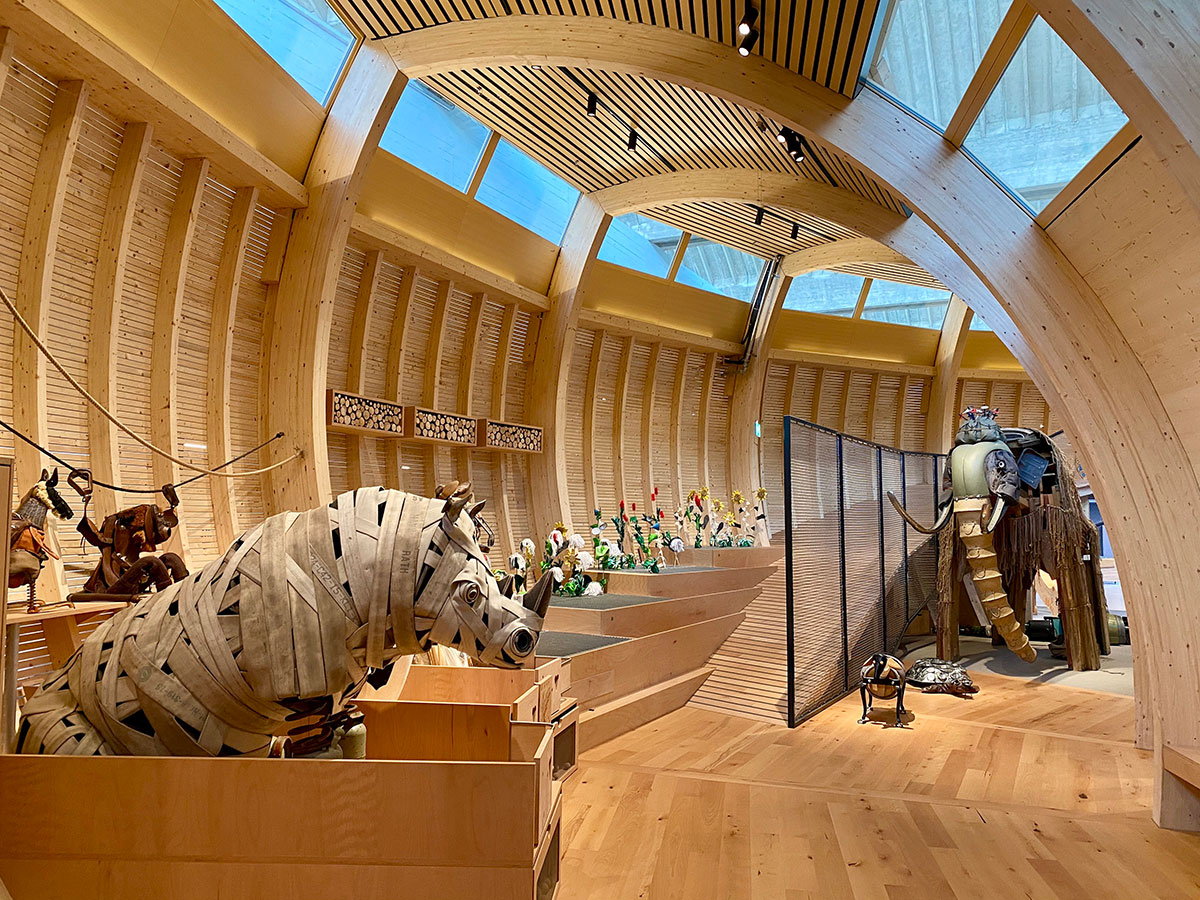
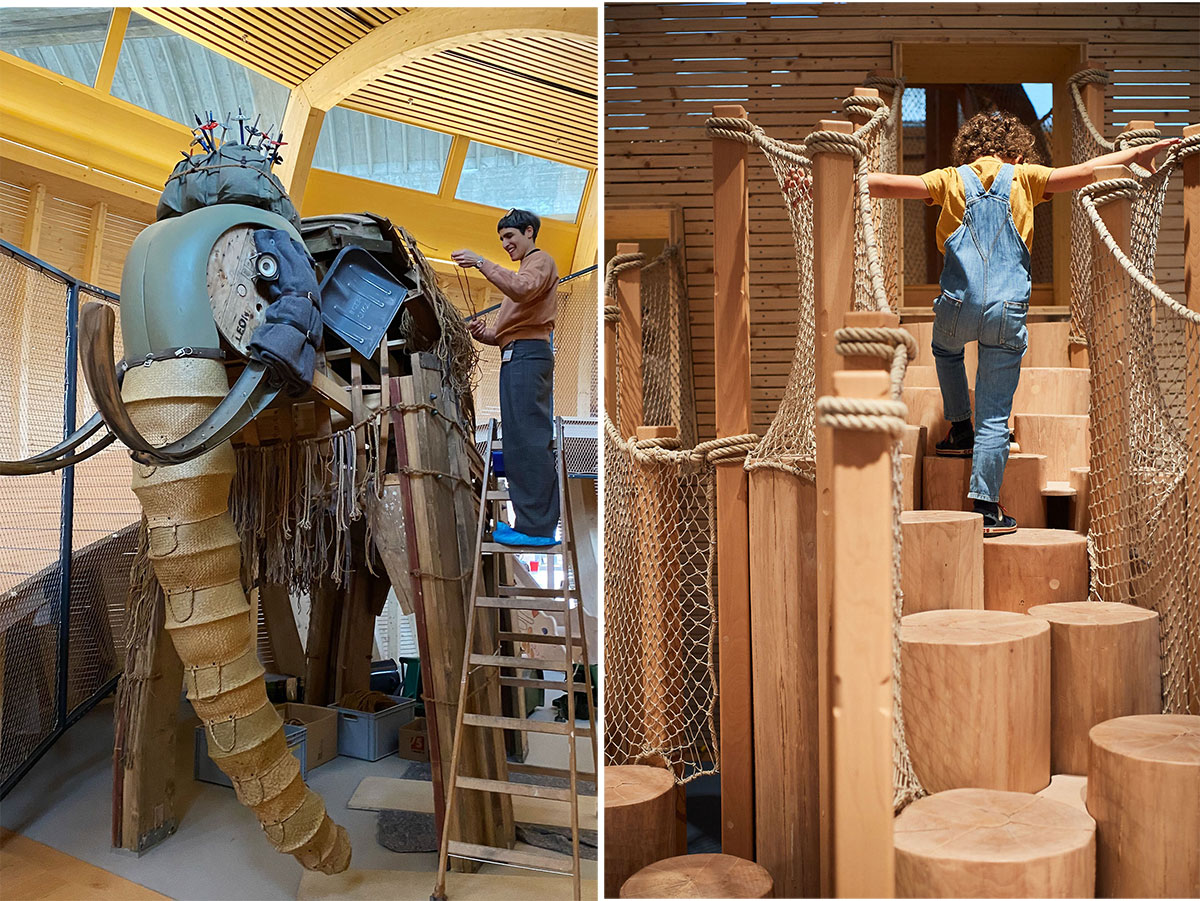
“With ANOHA, the Jewish Museum Berlin has created one of the few interactive experiences for children that actively engages issues of climate change. The story of the flood and the ark is accessible and familiar for children, viewed through a contemporary lens where everyone is expected to participate as stewards. ”
Alan Maskin, Design Principal, Olson Kunding
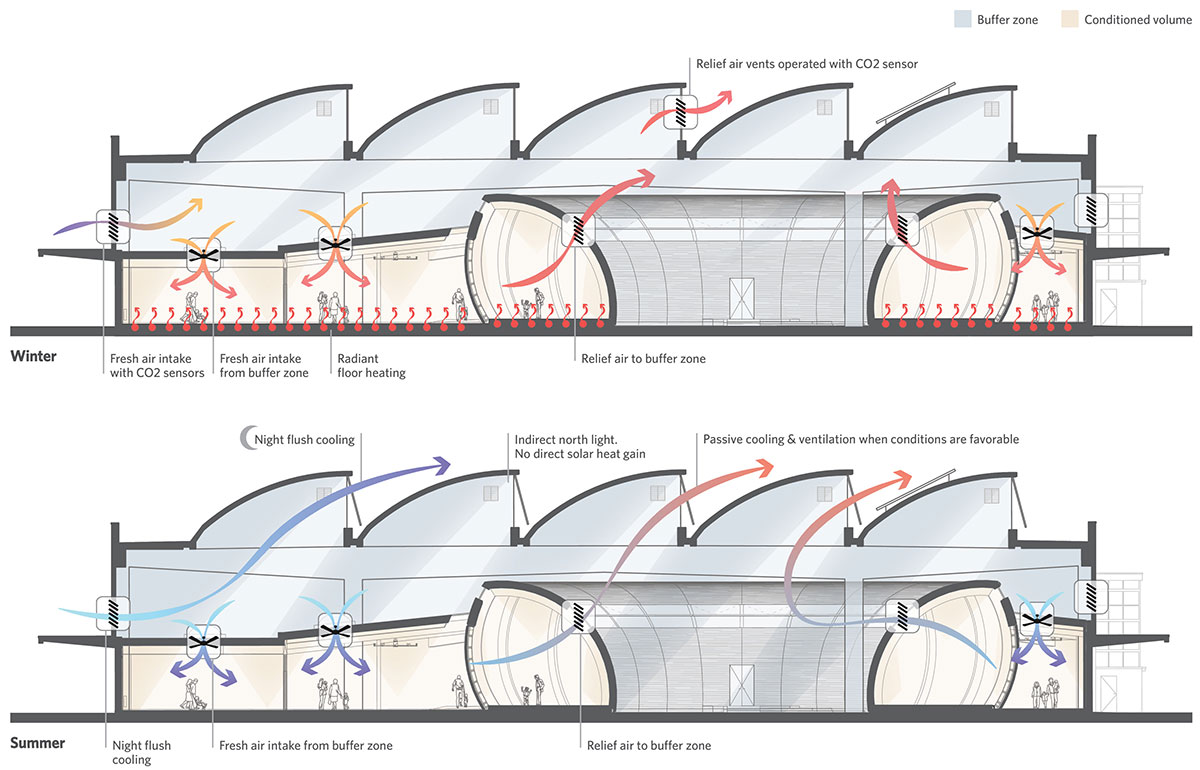
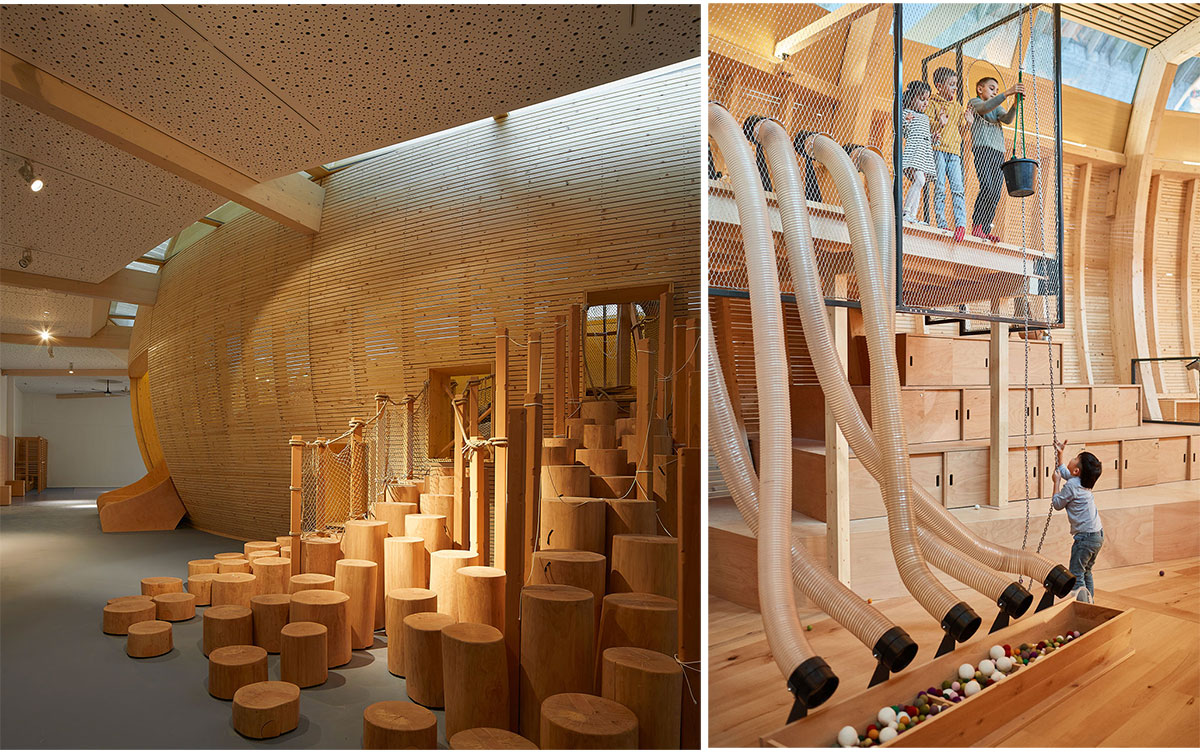
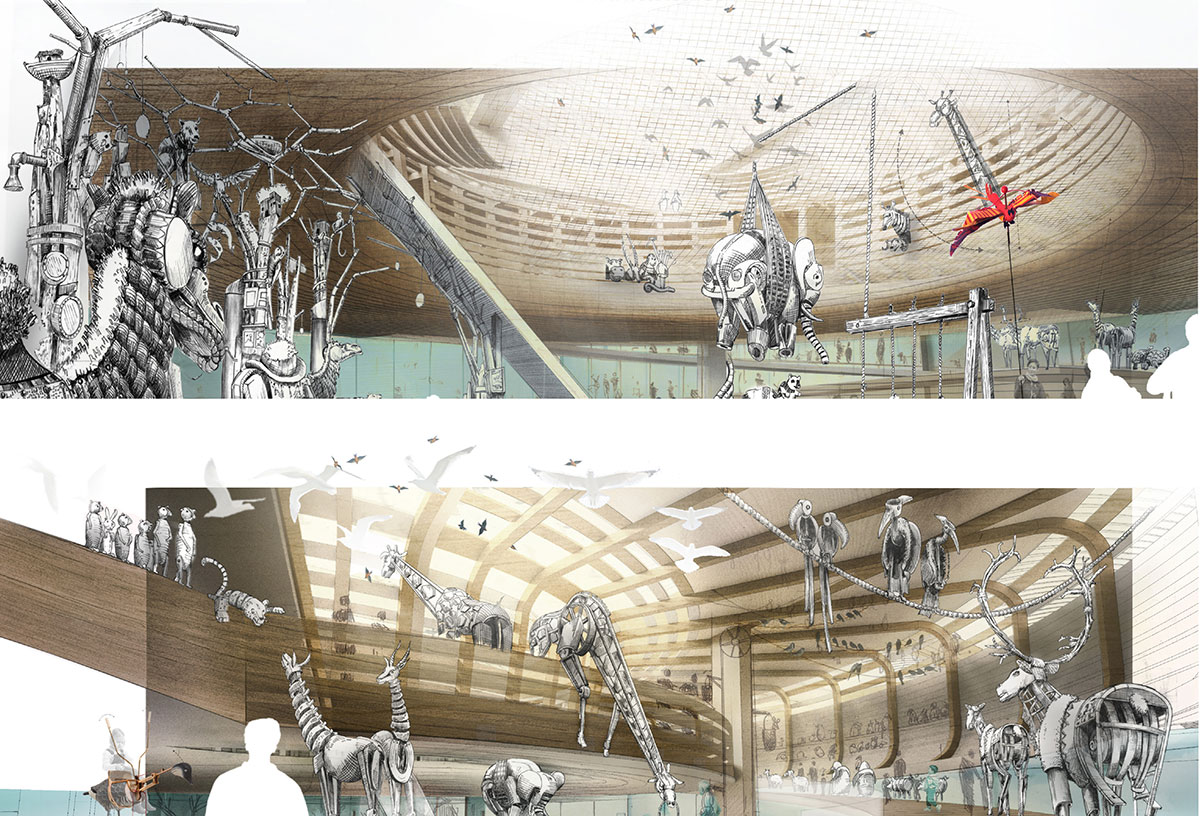
ANOHA uses the historic former market hall shell to reduce its carbon footprint. The wooden ark contributes to a 95% smaller footprint than a similar new building. The existing hall’s environmental buffer eliminates extensive mechanical systems. The insulated concrete shell tempers the interior environment, creating a double skin façade. Ceiling fans and operable windows encourage active air movement between the structure and the ark. Overhead skylights use operable louvers for natural ventilation and heat exchange, controlled by sensors. The curved concrete roof forms draw daylight into the interior, while the ark’s windows support passive daylighting.
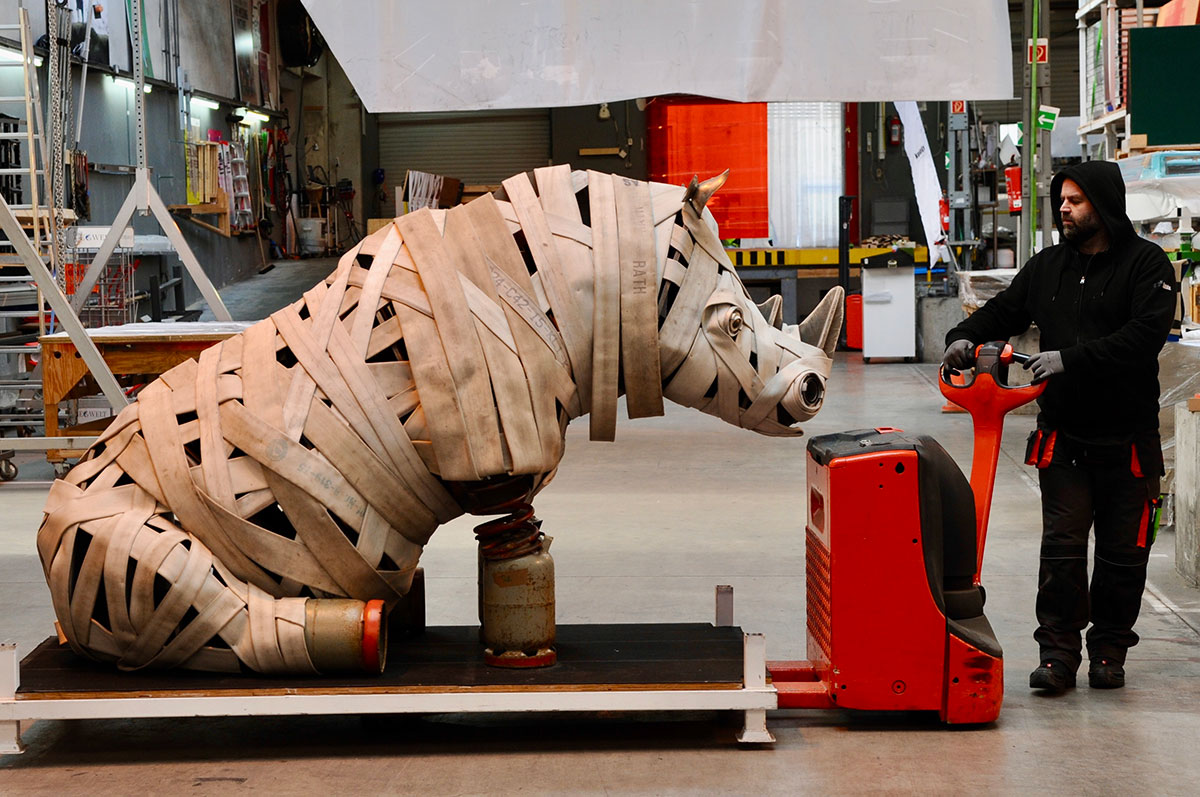

Building on the Skirball Cultural Center’s model, more than 150 sculptural animals populate ANOHA’s ark, each created from found objects by a team of 18 German artists. This approach encourages children to consider the importance of recycling and adaptive re-use, while supporting ANOHA’s core philosophy of creativity and imagination. The tactile nature of these sculptural objects and the sense of playful discovery as children recognize the familiar materials used to make them further serve to highlight the importance of respecting and treasuring global resources.




